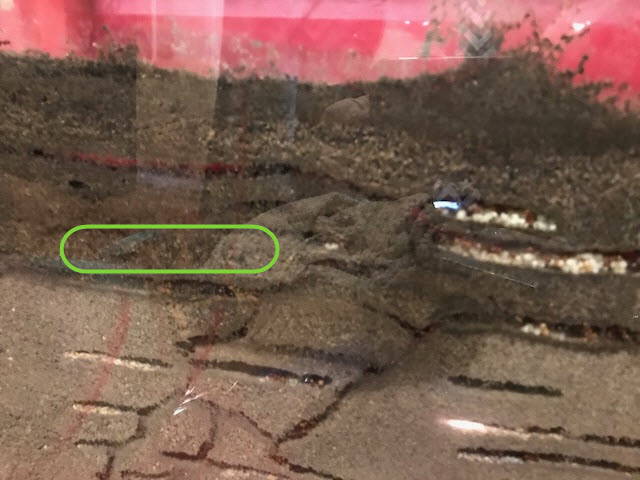Hey guys,
I need a little advice. One of my pogonomyrmex barbatus colonies is well established in a dirt ant-farm style nest. However, there has been some minor mold growth about an inch and a half down in the nest. They usually put their seed stores down much further in the nest and when I add water from the top it doesn't reach the seeds, but I'm thinking they left some higher up and so they molded. I attached a picture showing where the mold is but I had recently watered the nest and when the dirt is wet you can't really see the mold. It also looks like they may have blocked off this tunnel when they noticed it because I haven't seen any ants venture through it.
My question is, should I try and block off this section of the nest and scoop out the dirt until I get out all the mold, or should I try to introduce some springtails or something to eat the mold? Or do I need to do anything at all? I would also appreciate any advice on how often to add water to a nest like this. The water never seems to penetrate very far down into the dirt, but adding any more than I do causes significant flooding. I assume some flooding isn't a big deal as it gets soaked up quickly, but it can't be great for them.

Edited by UberDuber, April 3 2018 - 7:11 AM.

















